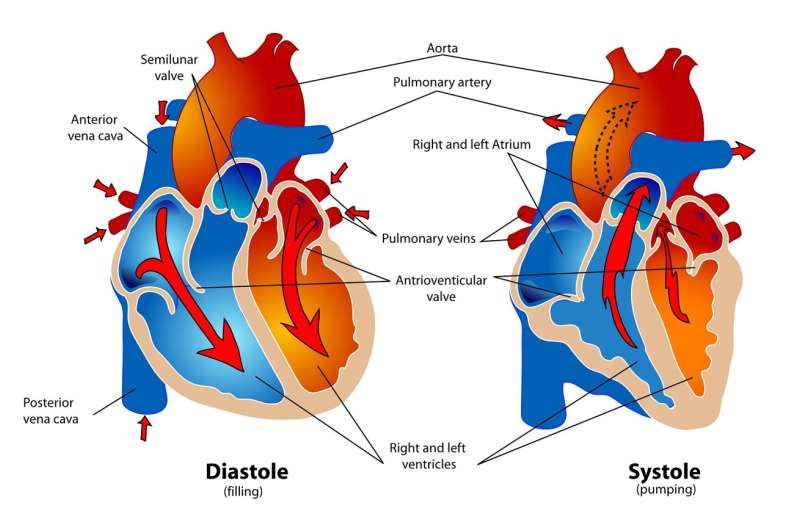More precise algorithms are needed to select patients for invasive coronary testing

Two myocardial perfusion imaging (MPI) tests for selecting patients with suspected coronary artery disease (CAD) for invasive testing have high specificity but low sensitivity in patients who have undergone coronary computed tomography angiography (CTA), according to late breaking research presented in a Hot Line session on 28 August at ESC Congress 2022.
"Most patients with suspected CAD referred for coronary CTA do not have obstructive disease," said Professor Morten Bottcher of Aarhus University, Denmark. "When we find suspected obstructive disease on coronary CTA, MPI techniques are guideline-endorsed to select patients for potential revascularization. However, our results show that while these imaging modalities identify patients with the most severe stenoses and high-risk CAD, they are less sensitive in patients with moderate stenoses and borderline or gray-zone fractional flow reserve (FFR) values who are prevalent in this setting. This means that many patients could avoid invasive testing if we apply second-line perfusion imaging. However, it also means that some patients with moderate stenoses are 'missed.' Studies focusing on the diagnostic management of patients with moderate stenoses are therefore needed."
Before referring patients with suspected obstructive CAD on coronary CTA to invasive coronary angiography (ICA), guidelines recommend verification of myocardial ischemia by MPI. However, there is a gap in evidence about the performance of perfusion imaging and which perfusion modality is the most accurate in these patients. The Dan-NICAD 2 trial compared the diagnostic performance of stress MPI by 3T cardiac magnetic resonance (CMR) and 82rubidium positron emission tomography (Rb-PET) in patients with suspected obstructive stenosis on coronary CTA using ICA-FFR as the reference.
The trial included 1,732 consecutive patients with symptoms suggesting obstructive CAD who underwent coronary CTA. The average age was 59 years and 57% were men. According to coronary CTA, 445 patients (26%) had suspected stenosis (defined as >50% diameter stenosis). All 445 patients were referred for both CMR and Rb-PET in randomized order, and finally all patients underwent ICA-FFR as the reference.
A total of 372 patients completed both CMR and Rb-PET and were included in the analysis. Hemodynamically obstructive coronary artery disease was identified in 164/372 (44.1%) patients during ICA-FFR.
Sensitivities for CMR and Rb-PET were 59% (95% confidence interval [CI] 51–67%) and 64% (95% CI 56–71%), respectively (p=0.21), and specificities were 84% (95% CI 78–89%) and 89% (95% CI 84–93%), respectively (p=0.08). The positive (PPV) and negative (NPV) predictive values were similar for the two techniques: PPV for CMR 76% versus Rb-PET 79%, NPV for CMR 73% versus Rb-PET 75%. Overall accuracy was slightly higher for Rb-PET compared to CMR (78% versus 73%, respectively; p=0.03). Rb-PET correctly classified more patients with high-risk disease (left main or three-vessel disease) as abnormal compared to CMR: Rb-PET 30/31 (96.8%) versus CMR 24/31 (77.4%), p=0.03.
Both modalities had high sensitivity for severe stenoses with >70% diameter stenosis, CMR 83% (95% CI 72–91%) and Rb-PET 89% (95% CI 79–95%).
Professor Bottcher said, "Less than half of the patients (44%) with suspected CAD on coronary CTA had obstructive CAD confirmed with ICA-FFR. CMR stress and PET stress had comparably moderate sensitivities and high specificities to predict the FFR results. A perfusion test approach therefore seems safe as almost all patients with serious disease (high-grade stenoses, left main and three-vessel disease) were diagnosed. But the modest sensitivities to predict low FFR mean that there was often a discrepancy between these advanced perfusion results and the invasive FFR."
He concluded, "The accuracy of coronary CTA needs to improve so that more patients without obstructive CAD avoid further investigations. This might be achieved through better CT image quality and perhaps by more advanced image analyses like non-invasive FFR estimation and photon counting systems. Perfusion techniques could also be improved, for example by using quantitative measurements of perfusion with CMR or 15O-water PET systems."




















